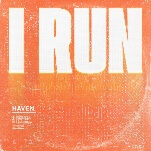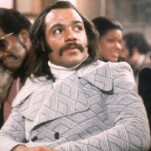Dance Your Ass Off: "Shake and Rattle Those Rolls"
It's not too hard to figure out how Dance Your Ass Off came to exist: dance shows and inspirational transformation programs both seem to be big reality TV payoffs, so it could be a natural, if not cheesy, fit in the summer schedule.
I was a little morbidly curious to find out how this show would treat the subject of fat people dancing to lose weight. If we got a lot of fat puns (“Can she can-can her can-can away?”) or see slo-motion jiggling, then this could be one of the worst shows ever (since it's on Oxygen, however, there was a good chance it would be sympathetic). Also, how much crying and wheezing would there be?
Ultimately, though, once the novelty of a fat-people-dancing wore off, like most reality TV talent competitions early in the season, Dance Your Ass Off premiere grew overlong and dull. The pro is that some overweight people have the opportunity to show that they can dance: I am happy for those who really can move, because I think it's a good thing they're demonstrating that you don't have to look like the pixies on So You Think You Can Dance to be able to bust a move. However, at least for now, the show is not meant for typical dance show fans since the judging feels arbitrary and a little too "Good for you—you really went for it!" Meanwhile, yes, they're losing weight, but that's not bringing anything new to the television landscape that we haven’t seen on Biggest Loser or Celebrity Fit Club.
How does it work? Twelve contestants headed up to their reality-TV apartment (cue obligatory closeups of sassy tightly-wrapped asses) and started hugging each other and screaming and jumping up and down. Host Marissa Jaret Winokur (of the Broadway version of Hairspray and Dancing With the Stars) informed them that this is the weight loss show that proves that you can have fun and dance your way to fitness without starving yourself (the show seems careful to use words like "fit" and "healthy" and not "thin").
We met the contestants, who all seemed really excited to be there. There were a couple of prepackaged sad stories like Miles’, whose dad died from complications of being obese and doesn't want to follow in his footsteps. I liked sassy Tice, who's from Chicago, specifically "Engle whut whut wood!" Pinky's a street dancer (one of the thinner contestants, who range from the 180's or so to 300+), Angela's a former model and Ruben is a former dancer. I found Karla annoying for complaining, "I don't want to be fat anymore: I just want to be beautiful," and blaming her lack of a boyfriend on her size (even though I know several people who are her size or larger who have very satisfying love lives) and then comparing herself to the "huge" people in the competition.
Each contestant received a professional dance partner (I recognized at least one of them, Jesus, from So You Think You Can Dance), a medical doctor, registered dietitian, trainer, costume designer and own private loft plus access to a gym and dance studio. In addition to this, the dancers were provided with cabinets of food, one saying "Eat" (filled with healthy choices) and the other marked "Cheat" (filled with all those junky things that we know we aren't supposed to eat but look tasty). Each week the dancers perform for a live audience as well as judges, using the SYTYCD/Idol/Dancing with the Stars format of three people, one being a Brit. However, in this case the Brit isn't bitchy and one of the girls, Mayte Garcia, used to be married to Prince. So in addition to the dancing, the contestants are also weighed after each number, and they're judged on a combination of dance skill and weight loss and each week the lowest person on the leader board (reminiscent of DWTS) gets sent home. In addition to the already invaluable prizes of health and the gift of dance, the winner gets $100,000.








































